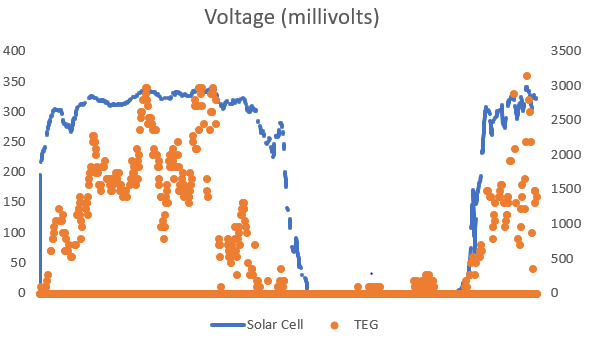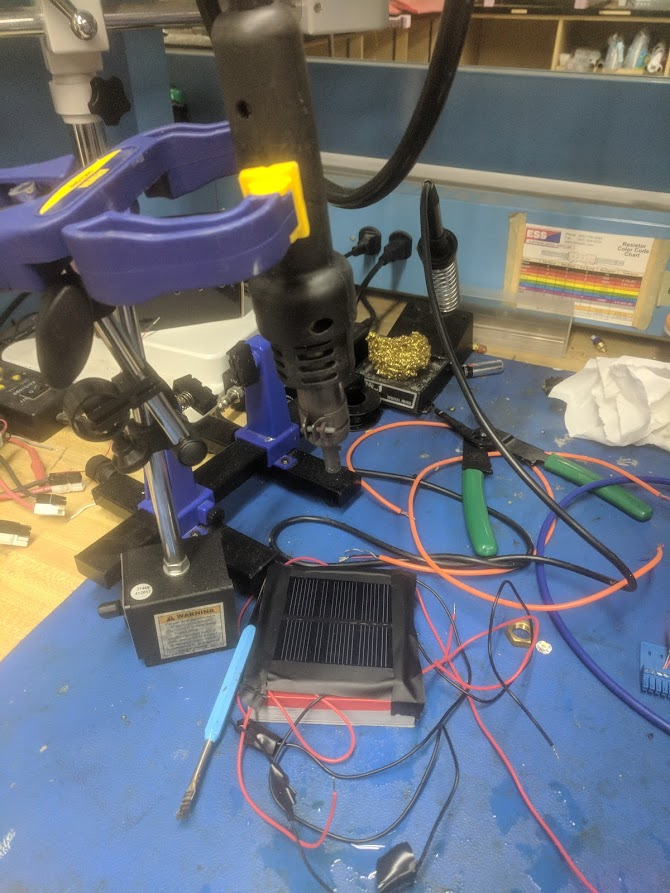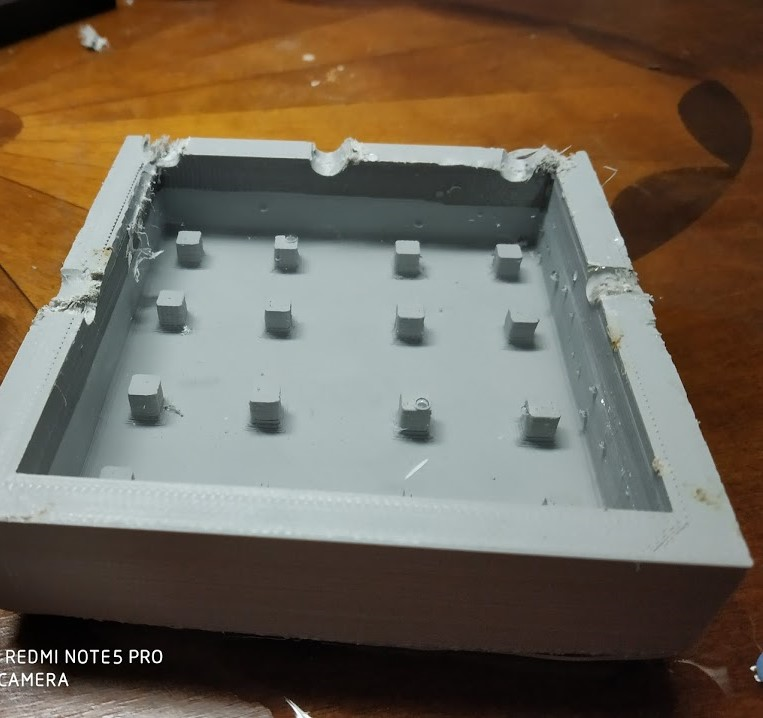-
Testing the entire fully assembled module!
07/16/2018 at 05:56 • 0 commentsSo I created a fully assembled module using the instructions I posted for this module. I 3d printed and glue a go pro joint so that I could use a suction cup to suction is wherever I want.
I had the particle photon collect data all day.
The data showed that the solar cell got less than 5v but otherwise it seem to be operating well for a cloudy day.
The TEG modules only produced .3 volts instead of the 3-4 volts that I was hoping for. The TEG modules were glued to the panel with a thermal glue. I think I got such a low voltage because this was testing in Acadia so the weather was not that hot and sunny on the day. It was only 65 degrees at night and 75 during the day so they wouldn't have been environmental help to maintain a temperature difference. Furthermore the lower level of sunlight may have also made it hard for the panel to heat up from the radiation. Lastly I believe that the water chamber is not well insulated because of the PLA. I think I need to take more tips from the Yeti company so that I can seal the chamber extremely well. I think throughout the day the environment is more easily capable of heating up the water which decreases the temperature difference.
The good news I got from the data is that the trend clearly shows that the TEG voltage produced increases as the solar cell voltage increase throughout the day. This I believe proves the theoretical idea that the energy absorbed as heat throughout the day can help run these TEGs. The challenge is to now maintain a larger temperature difference.
Copoed from internal project log
-
Artificial heated module test
07/16/2018 at 05:47 • 0 commentsWell the particle stopped working so I can't do testing throughout the day. I redesigned the chamber so it has an internal air pocket in the walls similar to a yeti. What I need to figure out is how I can fit reflective walls into the internals of the walls for great insulation.
I tested it artificially by attaching a blower onto a clamp. I used a laser thermometer gun to keep tabs on the outer surface of the solar panel. This setup was four TEG modules with four heat sinks placed into the water chamber. i didn't want to permanently glue the solar cell to the TEG modules so I had them in contact with each other.
Surprisingly and sadly the voltage measure was only .1-.3 volts! After removing the solar panel I found out that the TEG was still cool to touch. Apparently a touching contact was not good enough to set up a temperature difference.
I then wanted to make sure we can set up a temperature difference for atleast a half hour. The water I measured to be 70 degrees so I decided to heat up the TEG itself to 90 degrees.
Surprisingly the modules produce 3.4 volts for a good half hour.
The conclusions were that theoretically one could generate extra voltage from the TEG when attached to the solar panel to help power a device!
The problem is seems is that the contact between the solar panel and TEG needs to be very conductive.
Copied from internal project log.
-
Tested solar cell with one TEG in water cooled chamber
07/16/2018 at 05:32 • 0 commentsSo I cadded a housing temperature to insert the TEG-Solar module into. The day is once again reaching well into the 90s from a 60 degree night. I taped one TEG Module onto the solar panel and plunged the heat sink fully into the water.
The max voltage read was close to .1 volts. This is better than before but still not usable for a hybrid system. At least the solar cell is operating well on these sunny days. I suspect that because the TEG does not have good contact with the solar panel, it is not creating a good temperature difference.From a qualitative point of view the solar cell felt hotter to touch while the heat sink felt cooler to touch but not as cool as I hoped it would be after a run. I think the water chamber needs to be redesigned to seal out heat from reaching the water in all directions except from the back side of the solar panel. After looking into the yeti water bottles, I am trying to see if I can use some of there techniques to 3d print a better sealed chamber.
-
Tested solar cell with one TEG
07/16/2018 at 05:24 • 0 commentsI have taped a TEG onto the back of a solar cell. The TEG is attached to the heat sink using the thermal conductive tape it came with. The hot side of the TEG is put into contact with the back of the solar panel. The heat sink is exposed to the surrounding air. I am wondering how well the heat sink works in keeping a temperature difference.
The day is reached a temperatures at around a 90 degrees. After a full day of exposing the setup to the sun I am sad to say that the max that I recorded on the particle photon was .05 volts. At this point four TEG modules would only produce a max of .2 volts with most likely low amperage. I believe this is because the heat sink is small enough that it is easily heated from the surrounding environment
I will need to figure out how to passively keep the cold side of the TEG module cool. I will be testing a water heat coupling to see if it will help create a larger temperature difference for a shorter period of time.
Copied from internal project log
Hybrid Thermoelectric Solar Cell
Novel power harvesting module integrates the energy harvesting abilities of a thermoelectric generator with a solar cell to maximize output


